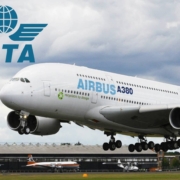High-tech airport checkpoints
The Transportation Security Administration, better known as TSA, has focused its efforts in recent decades on the implementation of new technological tools.
That allows airports to have safer and more efficient passenger checkpoints, incorporating innovations such as: digital identification, facial recognition, and even computerized tomography.
For this reason, in today’s article, we will inform you about the latest innovations in airport checkpoint systems that have been introduced in the sector.
Computerized tomography for baggage scanning
These machines were created for medical purposes. They are now being used in the airport industry as a security device.
Providing rotating, color-coded, and three-dimensional images of all baggage entering the facilities.
All are supported by new computer programs with automatic learning that allow checkpoints to study the contents of a suitcase more quickly and accurately.
High Definition Body Scanning
High-definition imaging technology (HD-AIT) systems are currently under development to enhance existing body scanning devices.
Which would allow for a detailed view of each passenger without them having to hold their arms above their head, remove their shoes or coats.
These devices are designed to detect a greater number of prohibited items, thus reducing inspections and making passenger scanning more efficient.
Facial recognition technology
Facial recognition technology is currently tested at several international airports, to verify the identity of passengers passing through their facilities.
New stations known as “Innovation Checkpoint” will be installed at airports for the use of this type of technology. Where identification software compares a photo taken at the checkpoint with the identification presented by the passenger.
Checkpoints
Manual passenger verification is a thing of the past. Passenger check-in and boarding list audits are being handled by software. That allows real-time measurement of passenger traffic, whether in the immigration area or for control in the boarding area.
This type of technology allows for the early completion of passenger lists, verification of flight occupancy, and even calculation and verification of airport taxes.
They don’t require major investment by airports since they can be integrated with the systems currently used, such as the software known as PAX AIMS, developed by the company GP Nauticals.










Leave a Reply
Want to join the discussion?Feel free to contribute!